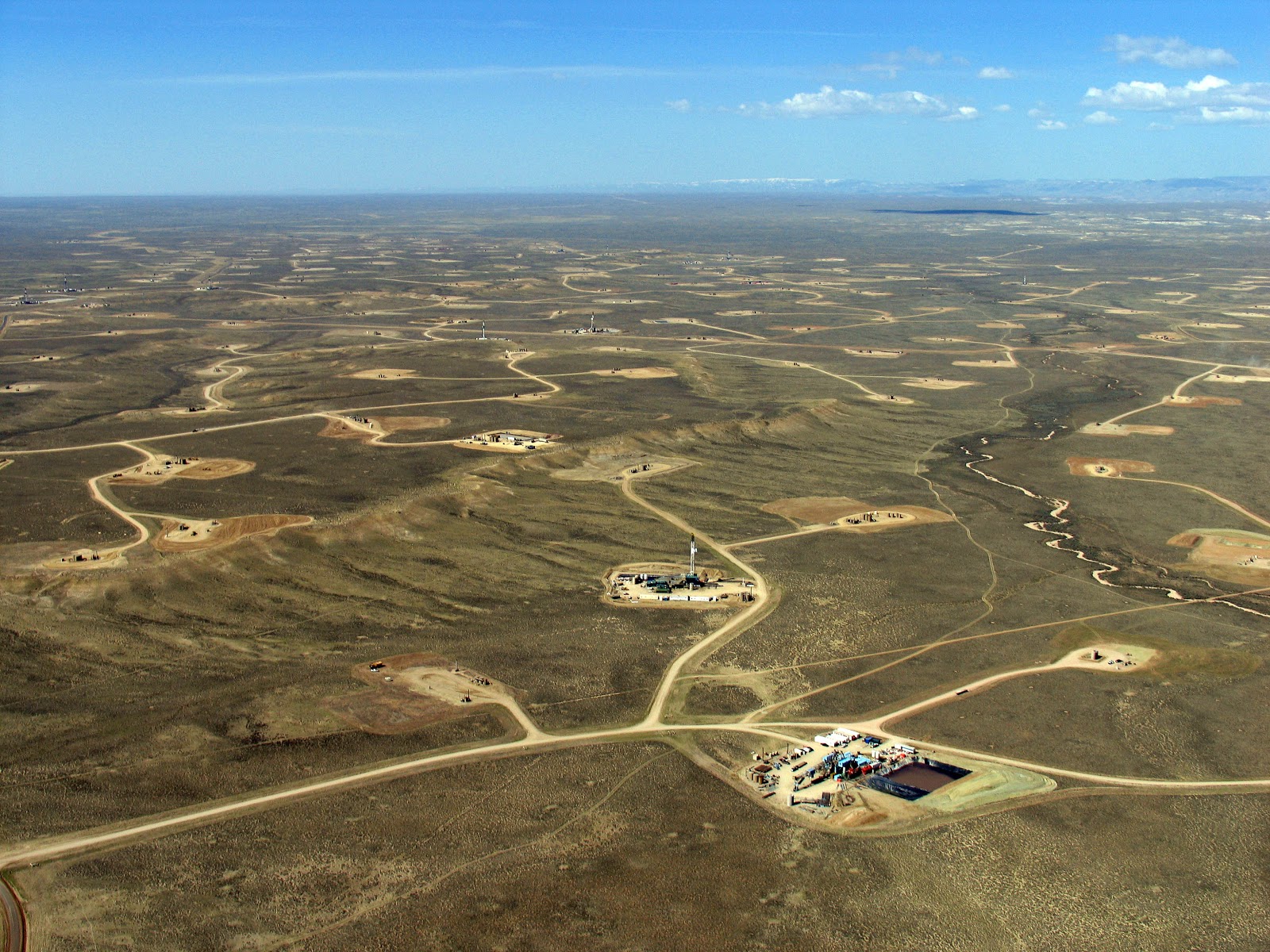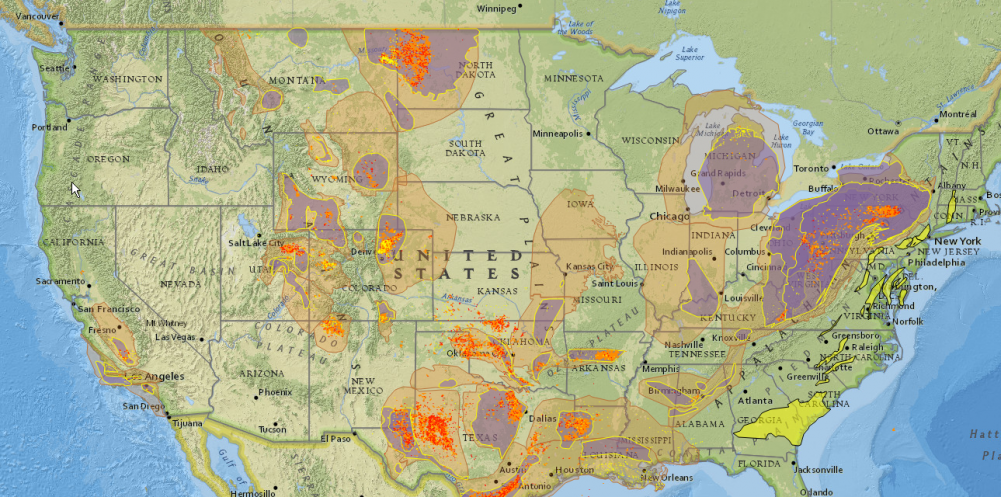Hydraulic Fracturing or “fracking” is not new; it was first used in 1949 and has advanced through the decades.
Today, resources geologists have known about for a long time are now recoverable due to improvements in fracking technology. As the image above shows, fracking operations can literally take over a landscape and now cover vast areas of the US.
The map below shows “shale plays” in grey, “shale basins” in light brown and installed wells in bright orange. As is true with all oil and gas wells, some turn out better than others, even when they appear to have have great potential.
Refracted Wells $1 Million, New Fracked Wells, $12 million
The experience of companies using hydraulic fracturing or “fracking” has been that some wells underperform and fail to meet expected economic benchmarks of profitability. However, new techniques are now allowing companies to go back and “refrack” old wells and turn them into “producing”, profitable sites.
In addition, wells that have been productive and profitable the first time around can be “refracted” and often produce the same amount of oil and gas as the first time around. Re-fracking a well doesn’t require an additional permit and so companies are able to go back at any time.
According to Reuters:
Using minuscule plastic balls, known as diverting agents, pumped at high speeds with water into the old wells, most of which are three to five years old, [Canadian firm Encana Corp.] blocked some the older fractures, or cracks. “The thought is that the diverting agent will go to the cracks with the least amount of pressure,” bypassing cracks with higher pressure and boosting the pressure of the entire well so output climbs, [said David Martinez, Encana’s senior manager for Haynesville development].
Re-fracking is sweeping the hydraulic fracturing industry as more and more companies are interested in the process. Data is being collected on refracking sites but incidence of refracking would indicate the practice is working. By way of example, a well that has undergone fracking may produce oil or gas for 5 to 8 years, with diminishing output. It is at this point that operators might consider refracking.
Leaders in Refracking
Refracking has become possible due to new technological developments in the drilling industry, led by companies such as Halliburton, with lots of contributions from smaller players.
A company called Exco Resources,for example, refracted a well recently leading to an increase in daily production of 1.3 million ft.³ of natural gas. For energy producers, this is considered “low hanging fruit.”
Finally, new wells are being designed with refracking in mind so that the process is easier down the road.
Related articles on IndustryTap:








